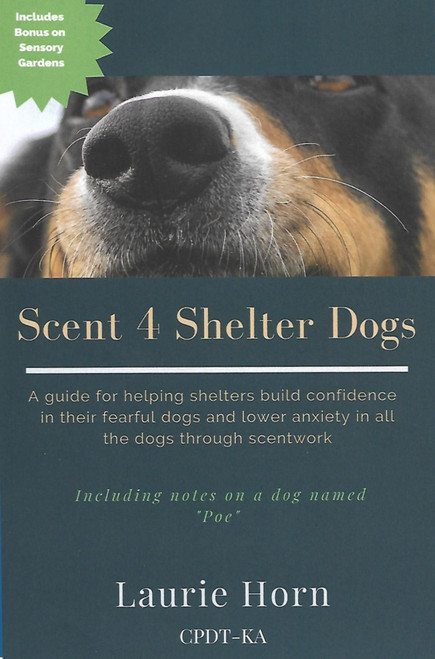Unveil the mysteries of Scent! Now you can understand how and why a dog can work scent. This fascinating book explains the composition of scent, how it works in the dog's nose, and what affects scent and much more!
The Sense of Smell
Anatomy and Physiology
Theories and Odor
The Human as a Scent Source
Transmission
Atmospheric Factors and Airborne Scent
The Ground Scent Picture
Working on Dog's Scent
Snow Experiments
3 Reviews Hide Reviews Show Reviews
-
Scent and the Scenting Dog
This book was just what I wanted. I was taking an online course in Lost Item recovery. My interest was peaked in the science side of how scent moves and how dogs find it. This book is not a training book for scent work but, if you want an understanding of how your dog moves and finds the scent this book is for you. It covers some basic anatomy of how a dogs nose works. How cells "rafts" from us move and carry our scent depending on the terrain, wind, humditiy, temperature ect., Also what happens to the ground when we walk on it and how a dog can pick up how it changes the smells of the plants and soil after we step on them. If you want the science and how it all works get this book to use along with a class or another book for the training.
-
Some good general info about physiology and tracking. I was really looking for more of a Scentwork book.
More for tracking then Scentwork
-
Scent and the Scenting Dog
This book is divided into 12 Chapters beginning with a fleeting overview of the sense of smell. The second concerns itself with the anatomy and physiology of man and dog, structure and function. Chapter three briefly looks at the theories of odour by Dr J Amoore and Dr R Wright. The human body as a scent source is the subject of the following chapter where hereditary, racial, cultural and dietary variations; cells and skin; skin secretions and toiletries; inhabitants (bacteria, fungi and parasites to you and me); BO and the effects of attire are explored quickly. The manner in which this information is transmitted via the environment and thence to the dog constitutes the theme for the subsequent section, succeeded by atmospheric factors and airborne scent. The ground scent picture and its analysis explore vegetative fluids and odours as well as human scent and their combination. Variations caused by differing temperatures, time of day and foliage (or lack of it) are brought into play by the author. Mr Syrotuck examines working dogs on a scent from a practical, rather than competition, viewpoint hence why he does dwell on discrimination v detection. There are couple of nuggets of interest in this short chapter regarding cues and miscues; search patterns and accessories. William has devoted a whole chapter to snow, although I am not sure it warrants this level of interest in a tracking context (unless of course you are an Eskimo) and the self-important chapter entitled “Experiments” is somewhat less compelling than its title suggests. A Q & A section completes this tome however it is of limited value. This book was written in the early 1970s and still appears on recommended reading lists in some organisations. It is not aimed specifically at tracking nor is it a “how to” book. This is, in my opinion, a “quasi-scientific” tome for those who have a passing interest in scent rather than those who have a real passion for either the overall subject or the sport. I found it frustrating and I am not sure it would motivate readers to further their research or interest in tracking.










